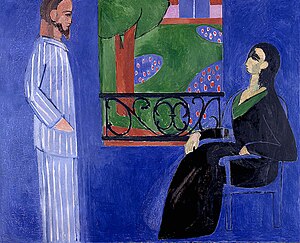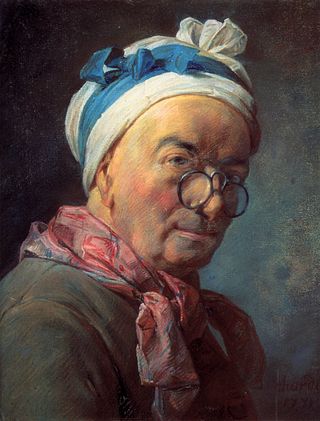
Jean Siméon Chardin was an 18th-century French painter. He is considered a master of still life, and is also noted for his genre paintings which depict kitchen maids, children, and domestic activities. Carefully balanced composition, soft diffusion of light, and granular impasto characterize his work.
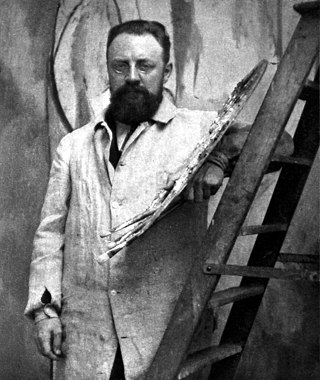
Henri Émile Benoît Matisse was a French visual artist, known for both his use of colour and his fluid and original draughtsmanship. He was a draughtsman, printmaker, and sculptor, but is known primarily as a painter. Matisse is commonly regarded, along with Pablo Picasso, as one of the artists who best helped to define the revolutionary developments in the visual arts throughout the opening decades of the twentieth century, responsible for significant developments in painting and sculpture.

André Derain was a French artist, painter, sculptor and co-founder of Fauvism with Henri Matisse.

Achille-Émile Othon Friesz, who later called himself Othon Friesz, a native of Le Havre, was a French artist of the Fauvist movement.

Picasso's African Period, which lasted from 1906 to 1909, was the period when Pablo Picasso painted in a style which was strongly influenced by African sculpture, particularly traditional African masks and art of ancient Egypt, in addition to non-African influences including Iberian sculpture, and the art of Paul Cézanne and El Greco. This proto-Cubist period following Picasso's Blue Period and Rose Period has also been called the Negro Period, or Black Period. Picasso collected and drew inspiration from African art during this period, but also for many years after it.

Dance (La Danse) is a painting made by Henri Matisse in 1910, at the request of Russian businessman and art collector Sergei Shchukin, who bequeathed the large decorative panel to the Hermitage Museum, in Saint Petersburg. The composition of dancing figures is commonly recognized as "a key point of (Matisse's) career and in the development of modern painting". A preliminary version of the work, sketched by Matisse in 1909 as a study for the work, resides at MoMA in New York, where it has been labeled Dance (I).
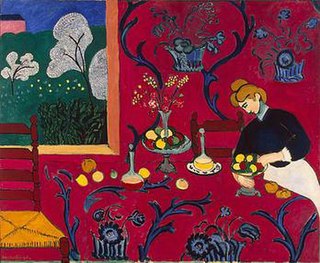
The Dessert: Harmony in Red is a painting by French artist Henri Matisse, from 1908. It is considered by some critics to be Matisse's masterpiece. This Fauvist painting follows the example set by Impressionism with the overall lack of a central focal point.
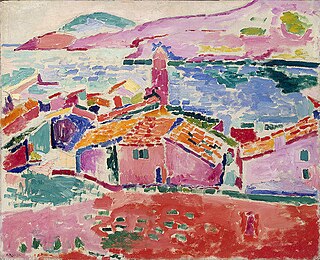
View of Collioure is a 1905 oil-on-canvas painting by Henri Matisse. It is an example of the style that Matisse employed during his early period of Fauvism. The painting has been in the collection of The Hermitage, St. Petersburg, Russia since 1948. It was originally part of the Sergei Shchukin collection, and then was at the State Museum of New Western Art in Moscow.

Window at Tangier; also referred to as La Fenêtre à Tanger, Paysage vu d'une fenêtre, and Landscape viewed from a window, Tangiers, is a painting by Henri Matisse, executed in 1912. It is held at the Pushkin Museum of Fine Arts, Moscow.

Notre-Dame, une fin d'après-midi is a painting by Henri Matisse from 1902. Its somber coloration is typical of Matisse's works executed between the end of 1901 and the end of 1903, a period of personal difficulties for the artist. This episode has been called Matisse's Dark Period.

Fauvism is a style of painting and an art movement that emerged in France at the beginning of the 20th century. It was the style of les Fauves, a group of modern artists whose works emphasized painterly qualities and strong colour over the representational or realistic values retained by Impressionism. While Fauvism as a style began around 1904 and continued beyond 1910, the movement as such lasted only a few years, 1905–1908, and had three exhibitions. The leaders of the movement were André Derain and Henri Matisse.
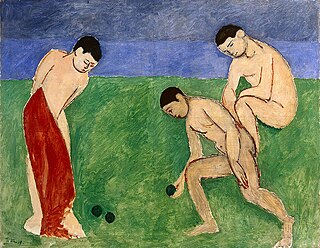
Game of Bowls is a 1908 painting by the French artist Henri Matisse. The painting shows three young men, probably Matisse's sons and nephew, playing a game of boules. Matisse sees the game as a manifestation of man's creativity, and an instrument to use in understanding the codes of life. The painting is part of Matisse's series on man's "Golden Age" and was part of Sergei Shchukin's collection before the October Revolution of 1917. It is now in the collection of The Hermitage, St. Petersburg, Russia.

Music is a wall-size painting made by Henri Matisse in 1910. The painting was commissioned by Sergei Shchukin, who hung it with Matisse's 1910 Dance on the staircase of his Moscow mansion. Matisse made the painting without any preparatory sketches, and thus the painting bears many traces of modifications. One can virtually trace the steps Matisse took to find the intended effect. As in Dance, the aim was to show man's attainment of a state of completeness by immersion in creativity.

Sergei Ivanovich Shchukin was a Russian businessman who became an art collector, mainly of French Impressionist and Post-Impressionist art.
Lydia Nikolaevna Délectorskaya was a Russian refugee and model best known for her collaboration with Henri Matisse from 1932 onwards.
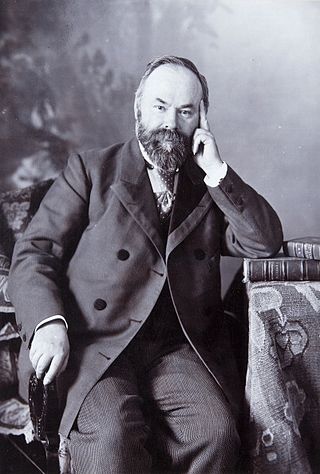
Pyotr Ivanovich Shchukin was an art collector who built an important collection of Russian ancient art and artifacts and owned several impressionist masterpieces.
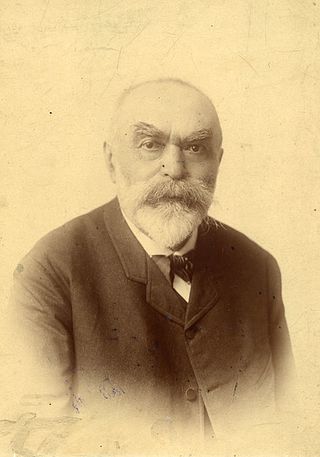
Ivan Vassilievitch Shchukin (1818-1890) was a Moscow merchant in the textile trade whose company, I.V. Shchukin and Sons, became one of the largest textile businesses in Russia. Several of his sons formed important art collections around the end of the nineteenth and start of the twentieth centuries.
Bathers by a River, also known as Bathers at the River and occasionally referred to as simply Bathers, is a large 1917 oil-on-canvas painting by French artist Henri Matisse. Matisse began painting the canvas in 1909 and finished the painting in the fall of 1917, making it one of three pictures he painted during the Battle of Verdun.

Goldfish is an oil-on-canvas still life painting by French visual artist Henri Matisse. Painted in 1912, Goldfish was part of a series that Matisse produced between the spring and early summer of 1912.
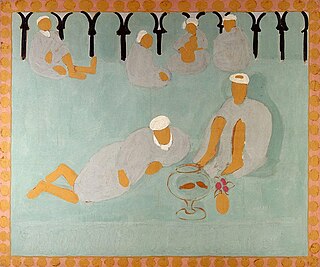
Arab Coffeehouse, is an oil-on-canvas painting by French visual artist Henri Matisse. Produced in 1913, Arab Coffeehouse was part of a series of goldfish paintings that Matisse produced in the 1910s and 1920s.
